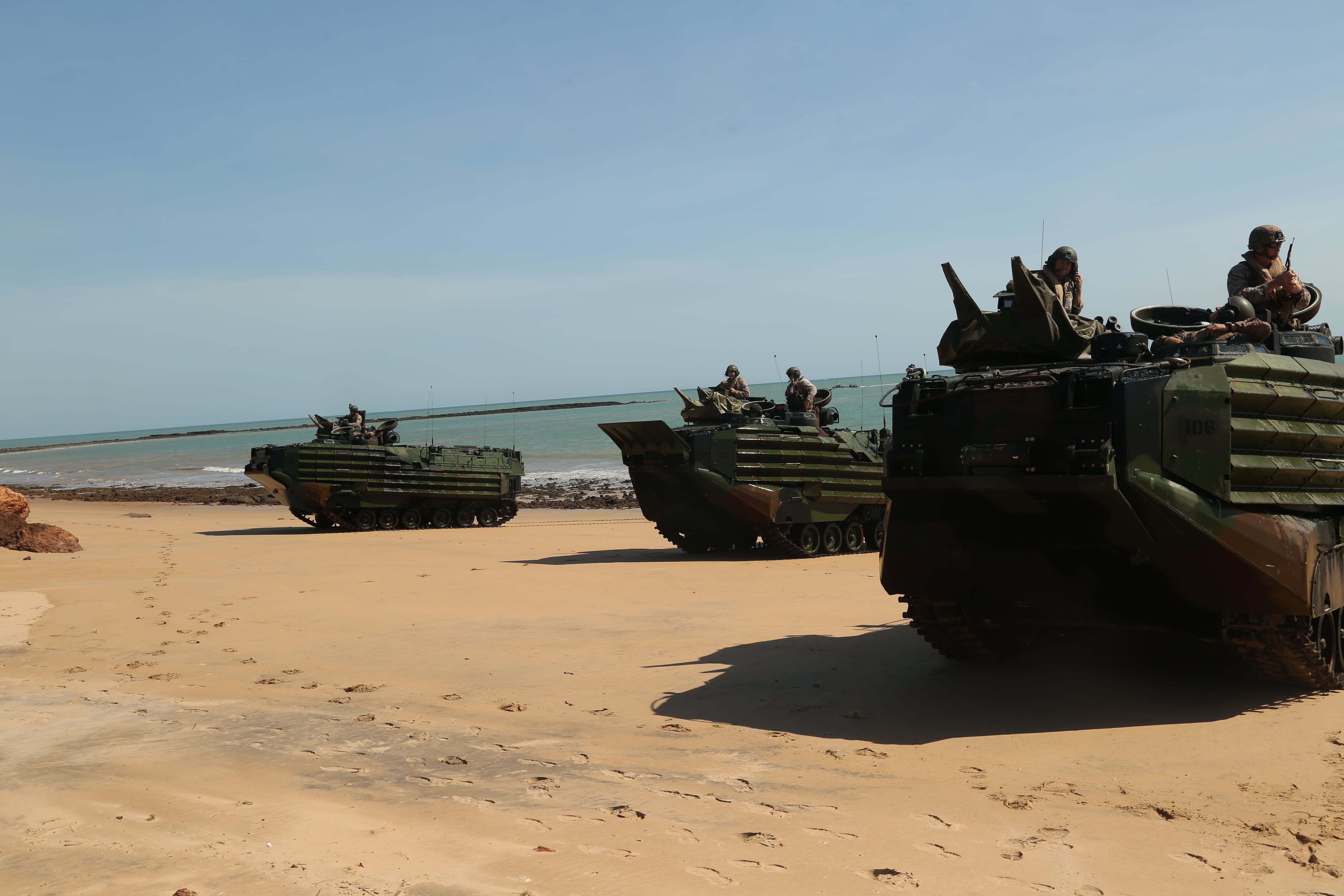The Marine Corps is shuttering its combat gear storage program in the Middle East as it shifts attention to Europe and the Pacific.
The fiscal 2023 defense budget request called for divestment of Marine Expeditionary Unit Augmentation Program–Kuwait (MAP-K) for a savings of nearly $31 million.
This closure, which follows the August 2021 conclusion of the war in Afghanistan, “supports the reduction of forces in [the] U.S. Central Command area of responsibility,” a budget justification document states.
This notice, hidden inside budget documents, announces the end of a gear stockpile that was heavily used over the last 12 years, and further emphasizes the Marine Corps’ aggressive pursuit of the Force Design 2030 strategy, which focuses on fighting in the Pacific and littoral regions.
RELATED

The planned divestment also follows the Marine Corps’ conclusion of its crisis response task force deployments to the Middle East, begun following the deadly 2012 attack on a U.S. consulate in Benghazi, Libya.
Established in 2010, MAP-K is based at Camp Arifjan, Kuwait, an Army base that also houses other logistics and sustainment elements. It’s the Corps’ only land-based prepositioning location in the Middle East and has existed to issue heavy equipment to the ground combat elements of deployed MEUs for exercises, training and assignments in the region.
As of late 2019, according to a Marine Corps news release, MAP-K had issued more than 1,500 equipment items since its establishment.
The program had equipped a tank platoon attached to the 11th MEU with combat vehicles difficult to transport via ship: four M1A1 Abrams tanks, a M88A2 Hercules armored recovery vehicle, a Cougar H-variant mine-resistant ambush protected 6x6 infantry vehicle; a 7-ton truck and a forklift, according to a press release.
“The MAP-K program benefits this MEU … and future MEUs with their prepositioned stockpile of vehicles,” 1st Lt. Harris Emmons, tank platoon commander for India Company, 3rd Battalion, 5th Regiment Landing Team, said in the release. “It helps us maintain the armor-protected firepower and shock effect that the ground combat element needs.”
While the Marine Corps continues to fund a network of three climate-controlled gear storage caves in Norway, it’s throwing significant resources behind Pacific operations.
Its budget request asks for a $28.6 million increase for maritime prepositioning, the lion’s share of which, about $25 million, “will be utilized to provide the Marine Corps an ability to support the maintenance of an initial Marine Littoral Regiment (MLR) equipment set … in U.S. Indo-Pacific Command area of responsibility,” documents state.
The Corps is requesting another $4 million to carry out analysis, site surveys and experiments around a prospective overhaul of its prepositioning program structure.
Though details are few, budget documents state that the Marines want to “transition the legacy prepositioning program into a resilient prepositioning network of the future for Distributed Maritime Operations.”
This suggests the next target for major change may be the Marine Corps’ Maritime Prepositioning Force, made up of two squadrons of logistics ships, each capable of equipping and sustaining a 16,000-person Marine expeditionary brigade for 30 days.
Dating from the 1980s, this floating gear stash is due for reimagining, according to a March 2021 Marine Corps Gazette article written by an unnamed group of officers from Headquarters Marine Corps. They noted that the current ships were too vulnerable to enemy attack from sea and land, and said the makeup and distribution of prepositioned gear needed to change to support the way Marines expect to operate in the future.
“While today’s prepositioning programs include both an afloat and ashore component, the future prepositioning network is envisioned to be a much more integrated network of afloat and ashore nodes that is optimized to support distributed Marine Corps operations in support of the maritime component commander,” they wrote.
The location and resourcing of the Defense Department’s prepositioning programs often provide insight into threat assessments and priorities.
The largest line item in the Pentagon’s European Deterrence Initiative, established after Russia’s 2014 annexation of Crimea, is “enhanced prepositioning.”
The Army has spent more than $3 billion in the past two fiscal years to maintain, renovate and increase stockpiles of heavy gear in Europe, an effort that has included opening four new sites in the Netherlands, Germany, Belgium and Poland.
Earlier in 2022, military prepositioning programs had a major proof of concept when, days after Russia’s invasion of Ukraine, the Army activated all six of its stockpiles in Europe for the first time for a real-world contingency. The gear, most of it heavy rolling stocks, was issued to 1st Armored Brigade Combat Team, 3rd Infantry Division, as it headed to Germany to support NATO allies and await further directives.
Congress has yet to finalize and pass the fiscal 2023 National Defense Authorization Act; until it does, all military budget planning remains predecisional.





